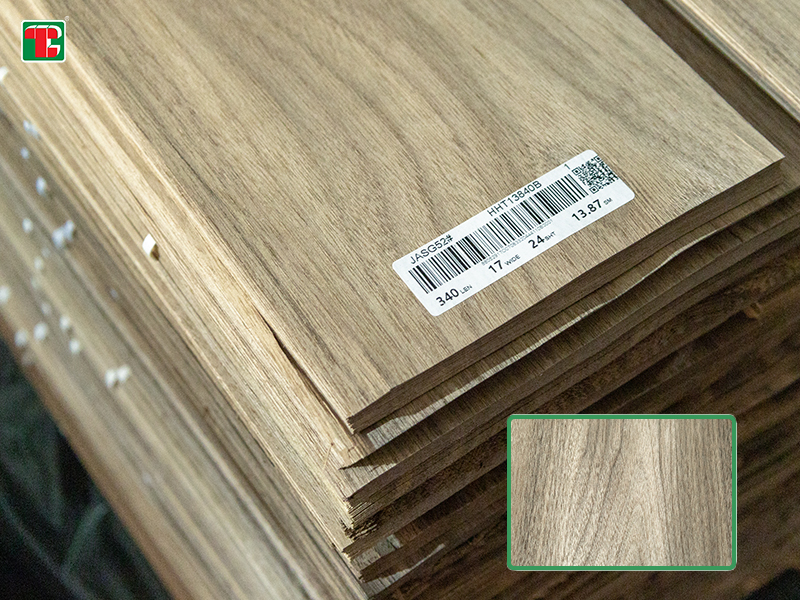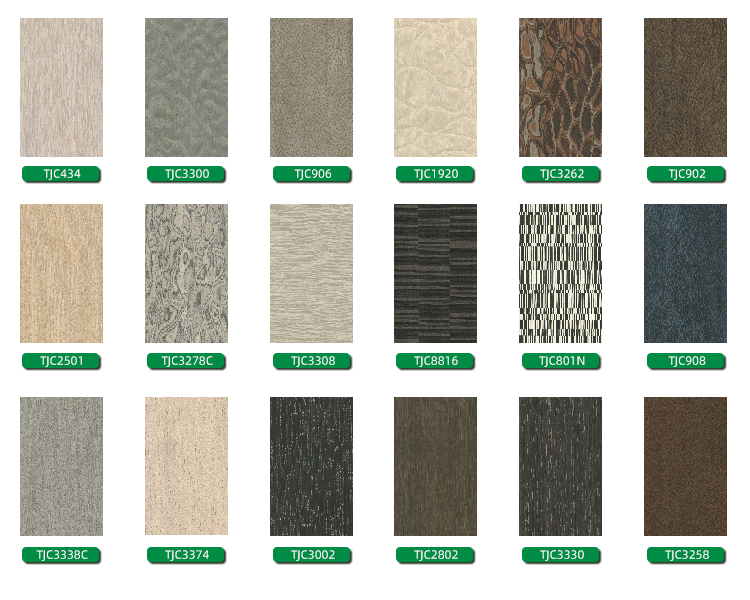In the world of interior design and woodworking, the choice between natural veneer and engineered veneer holds significant weight. This article endeavors to unravel the nuanced disparities between these two veneer types, providing a comprehensive guide to aid consumers and craftsmen in making informed decisions. By delving into the origins, manufacturing processes, and distinctive features of natural and engineered veneers, we aim to illuminate the path for those seeking the perfect blend of aesthetics and functionality in their projects. Whether you're a seasoned professional or an enthusiastic DIYer, understanding the essence of these veneer types will empower you to transform your visions into reality.
Natural Veneer:
A. Definition and Origin:
1.Sliced from the log (flitch) of a tree:
Natural veneer is derived from carefully selected logs, and thin slices are meticulously cut from the log's surface (flitch).
2.Reflects authentic patterns indicative of the tree species and its growth environment:
Each piece of natural veneer carries a unique and authentic pattern, providing a visual narrative of the tree species it originated from and the environmental conditions in which it thrived.

B. Manufacturing Process:
1.Logs sliced in sequence and bundled for consistency:
The manufacturing process involves slicing logs in a sequential manner, creating bundles that ensure consistency in the end product once spliced, pressed, and lacquered.
2.Manufacturing designed to preserve natural features with minimal alteration:
The manufacturing process is meticulously crafted to preserve the natural features of the wood, aiming for minimal alteration. This approach ensures that the inherent beauty of the wood is maintained in the final product.
3.Some natural variation expected between sheets:
Despite efforts to maintain consistency, natural veneer embraces the reality of the wood's natural characteristics. As a result, some variation is anticipated between individual sheets, adding to the uniqueness of each piece.
Engineered Veneer:
A. Definition and Origin:
Also known as reconstituted veneer (recon) or recomposed veneer (RV):
Engineered veneer, identified by alternative terms such as reconstituted or recomposed veneer, reflects its nature as a transformed and re-manufactured wood product.
Re-manufactured product with a natural wood core:
Unlike natural veneer, engineered veneer is crafted as a re-manufactured product, maintaining a natural wood core as its foundation.
Engineered through templates and pre-developed dye molds for consistency:
The engineering process involves the use of templates and pre-developed dye molds, ensuring a high level of consistency in appearance and color throughout the veneer.
Generally lacks surface knots and other natural characteristics found in each species:
Engineered veneer is characterized by a smoother surface, typically devoid of surface knots and other natural features found in individual wood species. This contributes to a more uniform aesthetic.
Maintains the natural wood grain from the core species used:
While engineered veneer lacks certain natural characteristics, it retains the natural wood grain from the core species, providing a genuine wood texture that adds depth and authenticity to the finished product.

Veneer Selection and Processing:
A. Natural Veneer:
Logs carefully selected for highestquality (veneer-grade logs):
Natural veneer production begins with the meticulous selection of logs, specifically chosen for their high quality and suitability for veneer-grade purposes.
Cooking process to make logs supple for slicing:
The selected logs undergo a cooking process to enhance their flexibility, making them more amenable to the slicing phase of production.
Thin slices dried, sorted, and inspected for defects:
Thin slices of veneer are carefully dried, sorted, and subjected to thorough inspections to identify and address any defects, ensuring a high standard of quality.
Adherence to FSC principles for ecological and sustainable processing:
The entire natural veneer manufacturing process adheres to Forest Stewardship Council (FSC) principles, emphasizing ecological and sustainable practices in wood sourcing and processing.
B. Engineered Veneer:
Engineered-grade logs harvested from fast-growing, renewable species:
Engineered veneer utilizes logs sourced from fast-growing and renewable tree species, emphasizing sustainability in the harvesting process.
Logs thinly sliced, dyed, and glued into blocks:
The logs are thinly sliced, dyed using pre-developed molds, and then glued into blocks during the engineered veneer manufacturing process. This intricate process contributes to the uniform appearance of the final product.
Emphasis on sustainability through the use of renewable species:
Sustainability is a key focus in the production of engineered veneer, achieved through the utilization of fast-growing and renewable tree species.
Often lower cost than natural veneer due to the use of fast-growing trees:
Engineered veneer is frequently more cost-effective than natural veneer due to the utilization of fast-growing trees, contributing to its affordability while maintaining eco-friendly practices.
Veneer Finish:
A. Natural Veneer:
Nature of wood leads to color changes over time:
Natural veneer exhibits the inherent quality of wood, undergoing subtle color changes over time. This natural aging process adds character and uniqueness to the veneer.
Some species lighten, others darken:
Depending on the wood species, natural veneer may experience lightening or darkening as it matures. This variability contributes to the rich and diverse aesthetic appeal of the veneer.
B. Engineered Veneer:
Particularly susceptible to color alteration:
Engineered veneer is more susceptible to color alterations over time, especially when exposed to environmental factors. It is important to consider this characteristic when choosing engineered veneer for specific applications.
Suitable for indoor use only:
Due to its susceptibility to color alteration and potential impact from external elements, engineered veneer is typically recommended for indoor use. This limitation ensures the longevity and stability of the veneer's appearance when used in controlled environments.
Environmental Impact:
Address the overall environmental impact of both natural and engineered veneers:
Understanding the environmental impact of veneers is essential for making eco-conscious choices. Natural veneers, sourced from responsibly managed forests, contribute to biodiversity preservation. In contrast, engineered veneers, while utilizing fast-growing trees, may have a lower impact on natural habitats.
Provide information on the carbon footprint, sustainability certifications, and eco-friendly aspects of each veneer type:
A.Natural Veneer:
Carbon Footprint: Natural veneer's carbon footprint is influenced by the logging process and transportation. However, responsible forestry practices and adherence to sustainable standards can mitigate its environmental impact.
Sustainability Certifications: Look for veneers certified by organizations like FSC (Forest Stewardship Council), indicating adherence to stringent environmental and social standards.
Eco-Friendly Aspects: Natural veneer, when sourced responsibly, supports forest conservation, biodiversity, and sustainable practices.
B.Engineered Veneer:
Carbon Footprint: Engineered veneer may have a lower carbon footprint due to the use of fast-growing trees. However, the manufacturing process and transportation still contribute to its overall environmental impact.
Sustainability Certifications: Seek engineered veneers with certifications such as CARB (California Air Resources Board) compliance, indicating adherence to emission standards.
Eco-Friendly Aspects: Engineered veneers, by using renewable species, contribute to sustainable forestry practices. However, the use of adhesives and dyes should be considered for their environmental impact.
Cost Considerations Beyond Material:
Delve deeper into the overall cost considerations, including installation, maintenance, and potential long-term expenses:
A.Installation Costs:
Natural Veneer: Installation costs may vary based on the complexity of working with natural veneer sheets, especially if dealing with variations in thickness or irregularities.
Engineered Veneer: Engineered veneer, with its uniformity, may have lower installation costs as the process is more standardized.
B.Maintenance Costs:
Natural Veneer: Natural veneer may require specific maintenance routines, including periodic refinishing, depending on the wood species and environmental conditions.
Engineered Veneer: Engineered veneer, with its smoother surface, may require less maintenance, but caution is needed to prevent color alterations.
C.Potential Long-Term Expenses:
Natural Veneer: While initial maintenance costs may be higher, the long-term expenses could be offset by the enduring beauty and potential for refinishing without compromising the veneer's authenticity.
Engineered Veneer: Although engineered veneer may have lower initial costs, potential color alterations over time and limitations in refinishing may impact long-term expenses.
Discuss whether the initial cost difference between natural and engineered veneers is offset by other factors in the long run:
D.Consideration of Initial Costs:
Natural Veneer: Initial costs for natural veneer may be higher due to the unique patterns and characteristics, as well as potential higher installation expenses.
Engineered Veneer: Engineered veneer tends to have a lower initial cost, making it an attractive option for budget-conscious projects.
E.Long-Term Investment:
Natural Veneer: Despite higher initial costs, the enduring appeal, potential refinishing, and authentic characteristics can make natural veneer a long-term investment in aesthetic and resale value.
Engineered Veneer: While cost-effective initially, the long-term investment may be affected by potential color alterations and limited refinishing options.
Overall Value Consideration:
Natural Veneer: Offers timeless beauty, potential for refinishing, and authenticity, making it a valuable long-term investment for those prioritizing aesthetic appeal.
Engineered Veneer: Provides affordability upfront but may have limitations in maintaining its original appearance over an extended period.
Considering installation, maintenance, and long-term expenses beyond the initial material cost is crucial for making informed decisions based on both short-term budget constraints and long-term value considerations.
In conclusion, the article highlights the key disparities between natural and engineered veneers, encompassing their origin, manufacturing processes, and suitability for different applications. Understanding these differences is crucial for consumers seeking the right veneer for their specific needs and preferences.
Post time: Dec-18-2023







